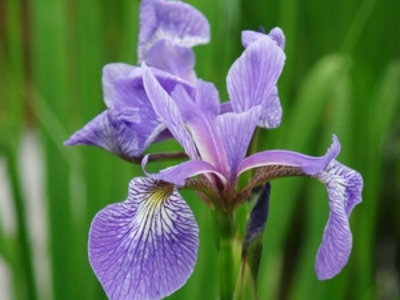- Destinations
Recreation Destinations
Parks
- Program Guide
- Programs
Age-Based Interests
- Schedules
- Register
- Destinations
Recreation Destinations
Parks
- Program Guide
- Programs
Age-Based Interests
- Schedules
- Register
The Park District of Oak Park offers a variety of opportunities to discover the richness and beauty of nature in its many forms. With 24 parks in our community, rich with a native diversity of plants, you will find the opportunity to enjoy the beauty and stillness that nature has to offer in our urban environment. The woodlands at Austin Gardens is home to a variety of living organisms and spring wildflowers. Our rain gardens and bioswales are hard at work filtering water runoff from surrounding areas. At our prairies, you will find migratory birds and pollinators enjoying lush native grasses and wildflowers.
Enjoy your visit! Please help us care for these areas by staying on trails, obeying our Carry In/Carry Out policy, and keeping your dogs on a leash.
Bioswales are landscape elements designed to prevent the flow of pollutants into fresh water ecosystems. Rain and surface runoff are diverted in to the bioswale where it collects and slowly filters through the soil layers, finally exiting below the earth’s surface throughout ground water and man-made storm systems. The East Avenue Bioswale demonstrates a natural way to manage storm water in an urban setting. This location was chosen because rainwater naturally collects there.
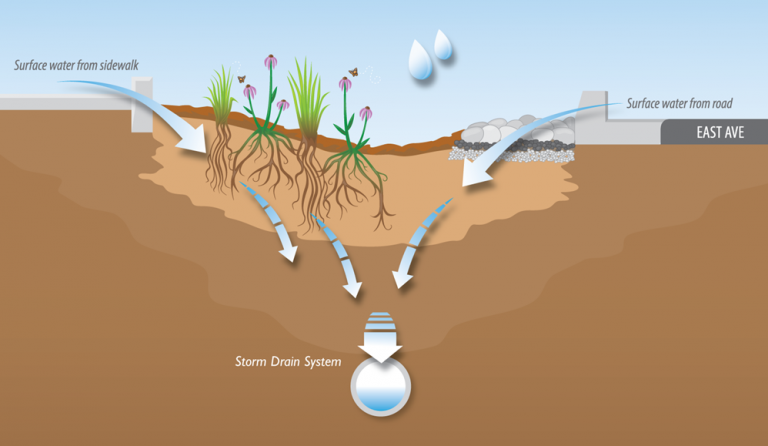
This woodland community is home to a variety of living organisms. Migratory birds can be observed. Deciduous trees, that shed their leaves in the fall, are abundant in the Woodland habitat. Woodland biodiversity is affected by the trees we plant. Native trees provide an adequate food source for wildlife, including migratory birds. Decaying trees provide a food source and shelter for many woodland inhabitants such as salamanders, worms and insects.
Wildflowers sprout, grow, flower, fruit and seed in the early months of spring before the tree leaves come out and block the sunlight. These spring blooms help feed insects and birds when little other food is available. A symbiotic relationship exists between the insects that feed on wildflowers, and then pollinate the flowers and disperse the seeds so new plants can grow.
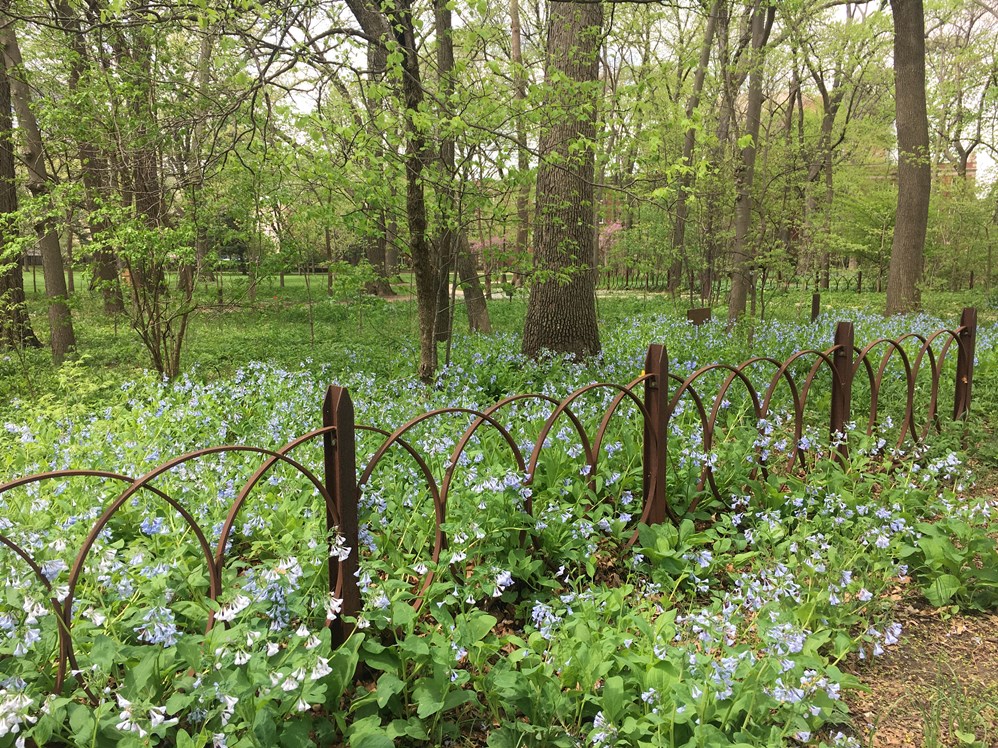
The wetland at Taylor Park is a showcase of native plantings and home to many diverse species. Wetlands are naturally occurring in undeveloped areas, but are rare within urban cities such as Oak Park. Wetlands serve several important functions including filtering storm water and providing wildlife habitats.
This wetland features three distinct zones:
Zone 1 – Short Grass Prairie – This area is above the seasonal waterline and contains
native prairie species such as Purple Coneflower, Black-Eyed Susan, Little Bluestem and Prairie Dropseed.
Zone 2 – Sedge Meadow – This is a middle zone in the wetland that will retain up to 3″ of
water during wet periods, but also withstand dry periods. This zone will be planted with species such as Prairie Cord Grass, Red Bulrush, Swamp Milkweed and several sedges and rushes.
Zone 3 – Emergent Zone – This is the lowest areas of the wetland and will have up to 6” or
more of water during the wettest periods of the year. This zone will dry out at times as well, and will have very sturdy and diverse sedges and species such as Blue Flag, Hard-Stemmed Bulrush, Great Bulrush, Wool Grass and Sweet Flag.
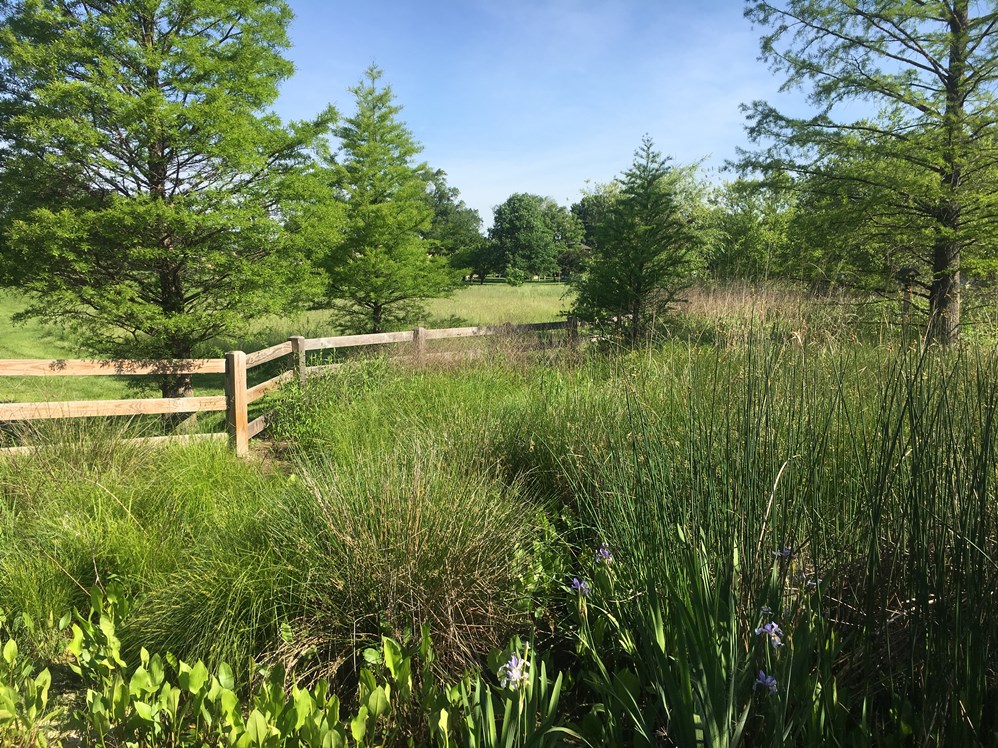
As open space disappears in our urban society, it becomes increasingly necessary to look at our native landscapes as a refuge for biodiversity. All plants in these gardens are native to Illinois and locally adapted for the Oak Park environment. In addition to producing beautiful flowers, this plant life supports pollinators from bees to butterflies, provides a home to area wildlife, and supports a diverse soil community of fungi and insects. Native organisms including plants, birds, mammals and insects create an intricate web of biodiversity, crafting a wonderful orchestration of life cycles that depend on each other for survival.
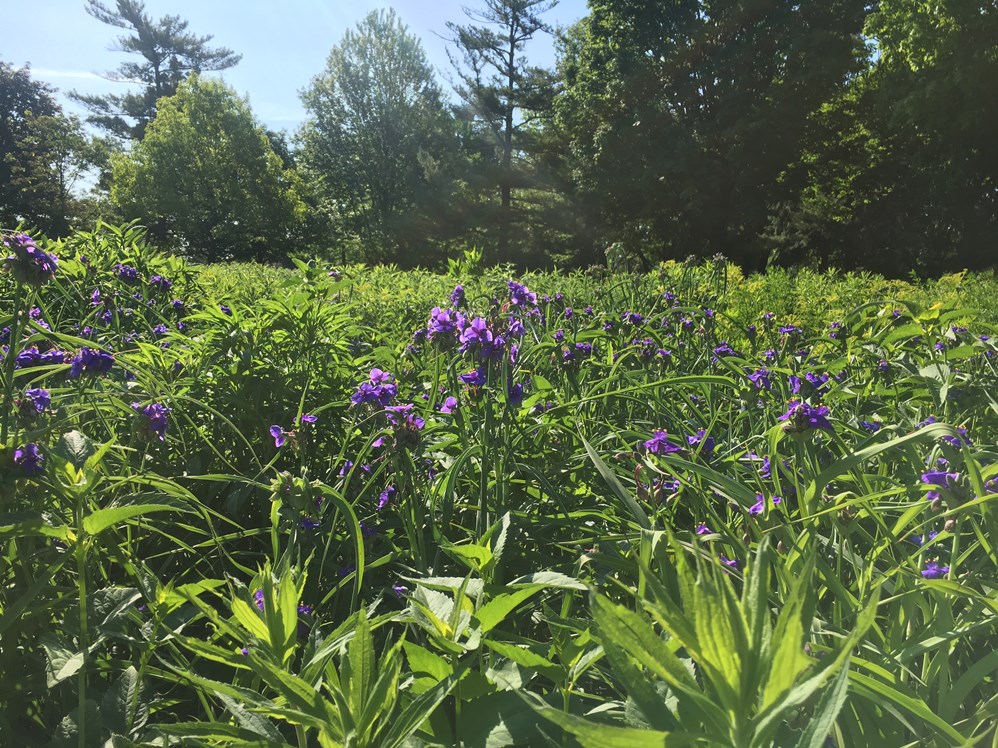
A rain garden is a man-made shallow basin that captures the rainfall and water runoff from surrounding areas.The porous soil absorbs the water and allows it to slowly percolate through the layers of earth.
Native plants need little maintenance which makes them an ideal solution to storm water pollution. Their deep roots prevent soil erosion and they have adapted to both wet and dry conditions so they can survive throughout the seasons. These plants also provide a habitat to local wildlife and their nectar provides a valuable food source for birds, butterflies and other insects. Rain gardens are often located in natural depressions in the landscape of near roof gutter downspouts. Rain garden plants thrive while preventing flooding and ponding.
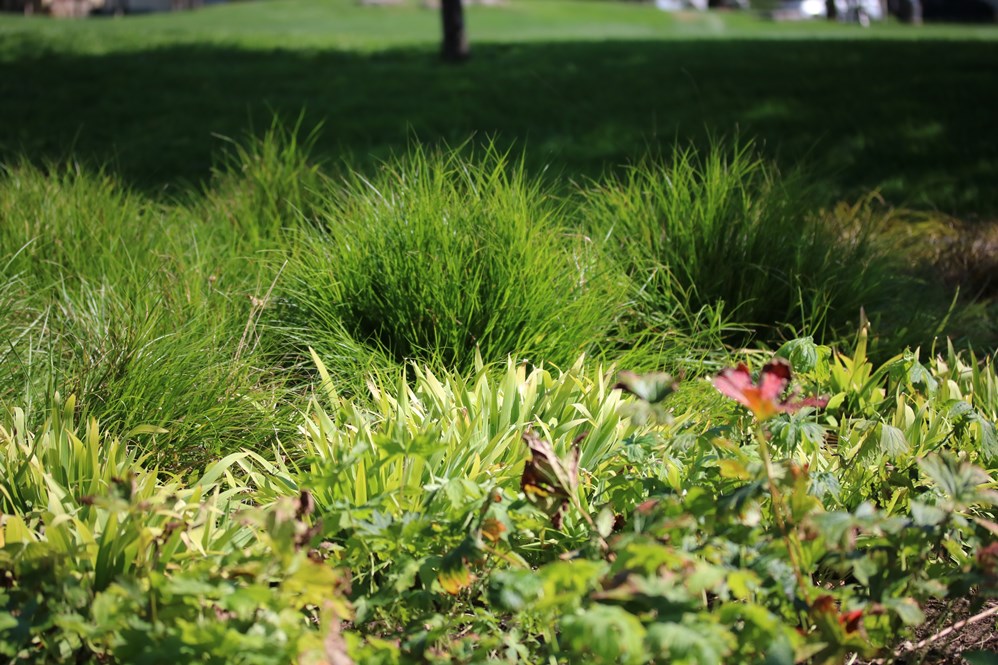
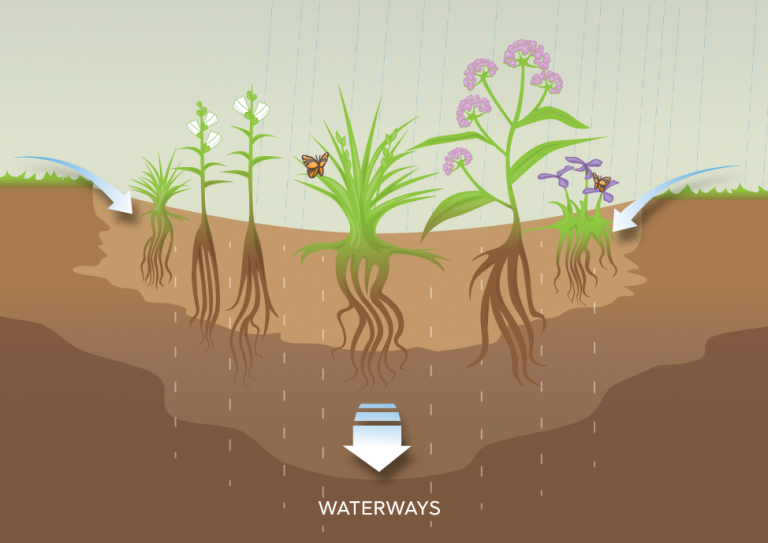
Management of these natural areas is conducted using ecologically-based techniques that include prescribed fire, hand removal of undesirable plants, and biological monitoring. The use of these management techniques represents a scientifically-based and ecologically-sound approach to natural areas management. Using prescribed fire in these gardens helps to regenerate plant growth, restore nutrient reserves in the soil, and minimize the impact of weedy and aggressive plant species.
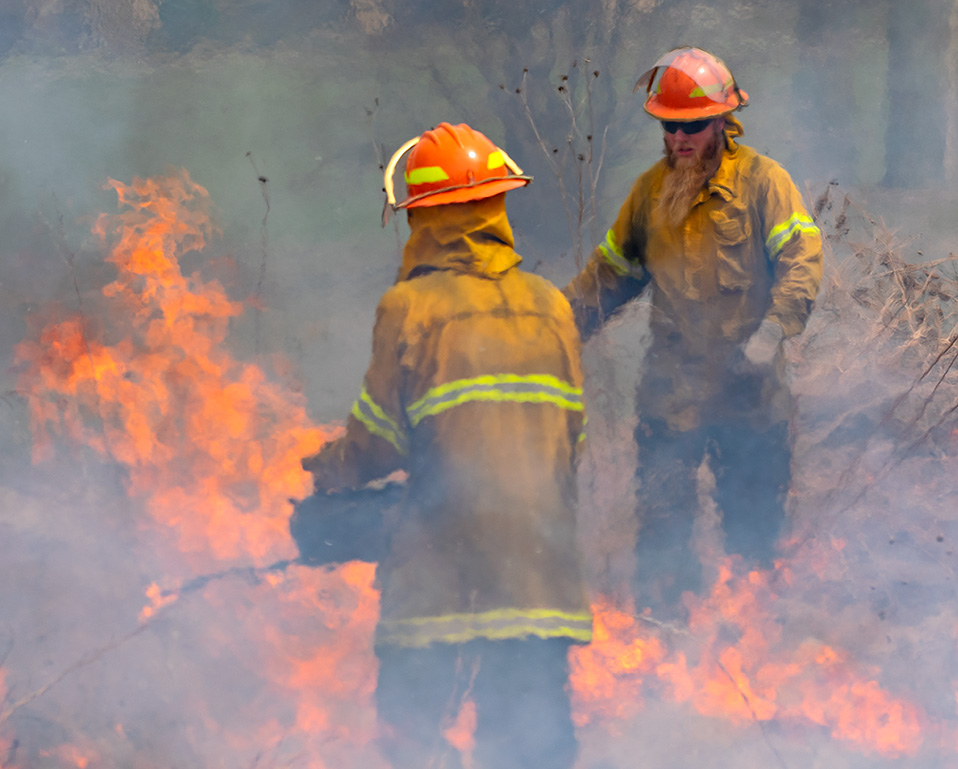
Many Illinois natural areas are being devastated by invasive plants that are taking over these habitats. Invasive plants out-compete native plants for resources and pollinators and alter the ecology of natural areas. Irradicating non-native and invasive plants from these areas is an important part of maintenance. Planting diverse, native plants encourages the balance of biodiversity needed for wildlife. The more diversity an area can support, the healthier the habitat is considered to be.
